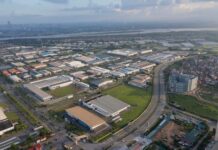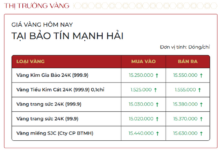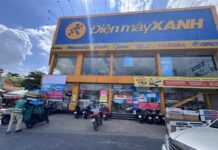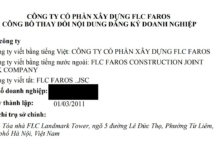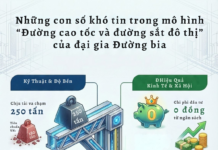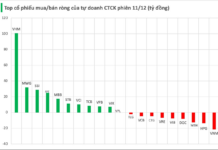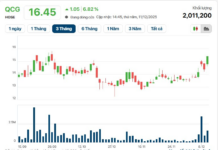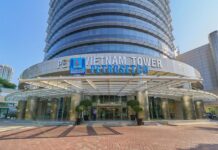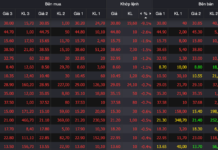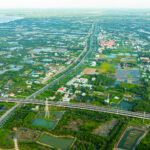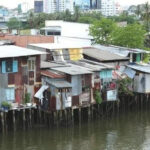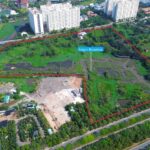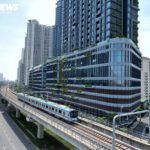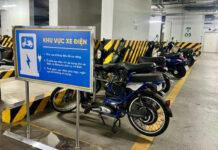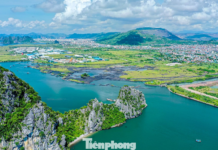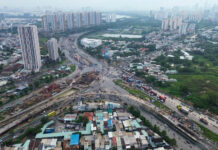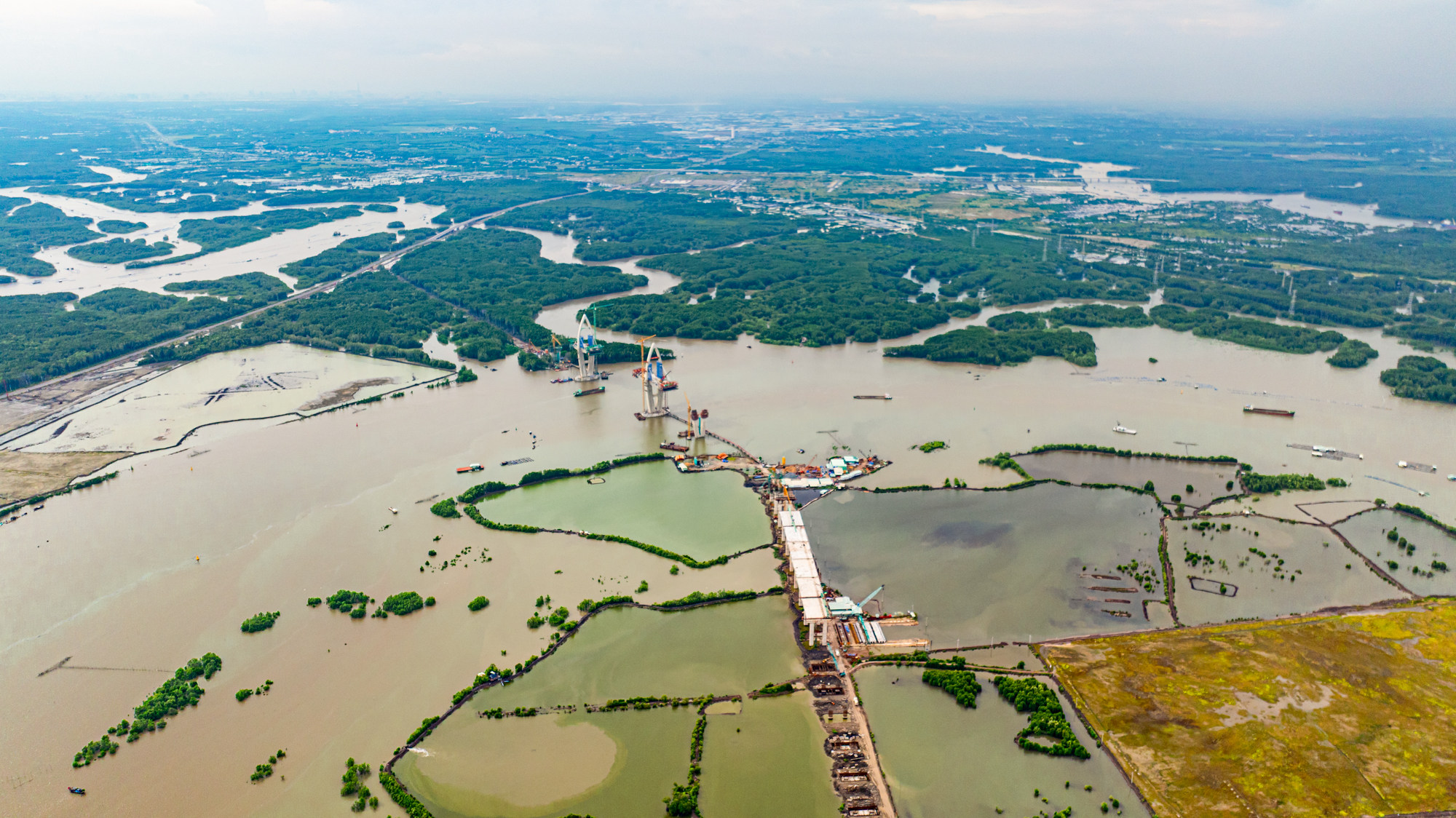
The Phuoc An Bridge spans the Thi Vai River, connecting Phu My Town (former Ba Ria – Vung Tau Province) with Nhon Trach District (former Dong Nai Province). Upon completion, the bridge will link Vietnam’s second-largest port cluster (Cai Mep – Thi Vai) with Nhon Trach, once home to nine industrial zones, the most in the country.
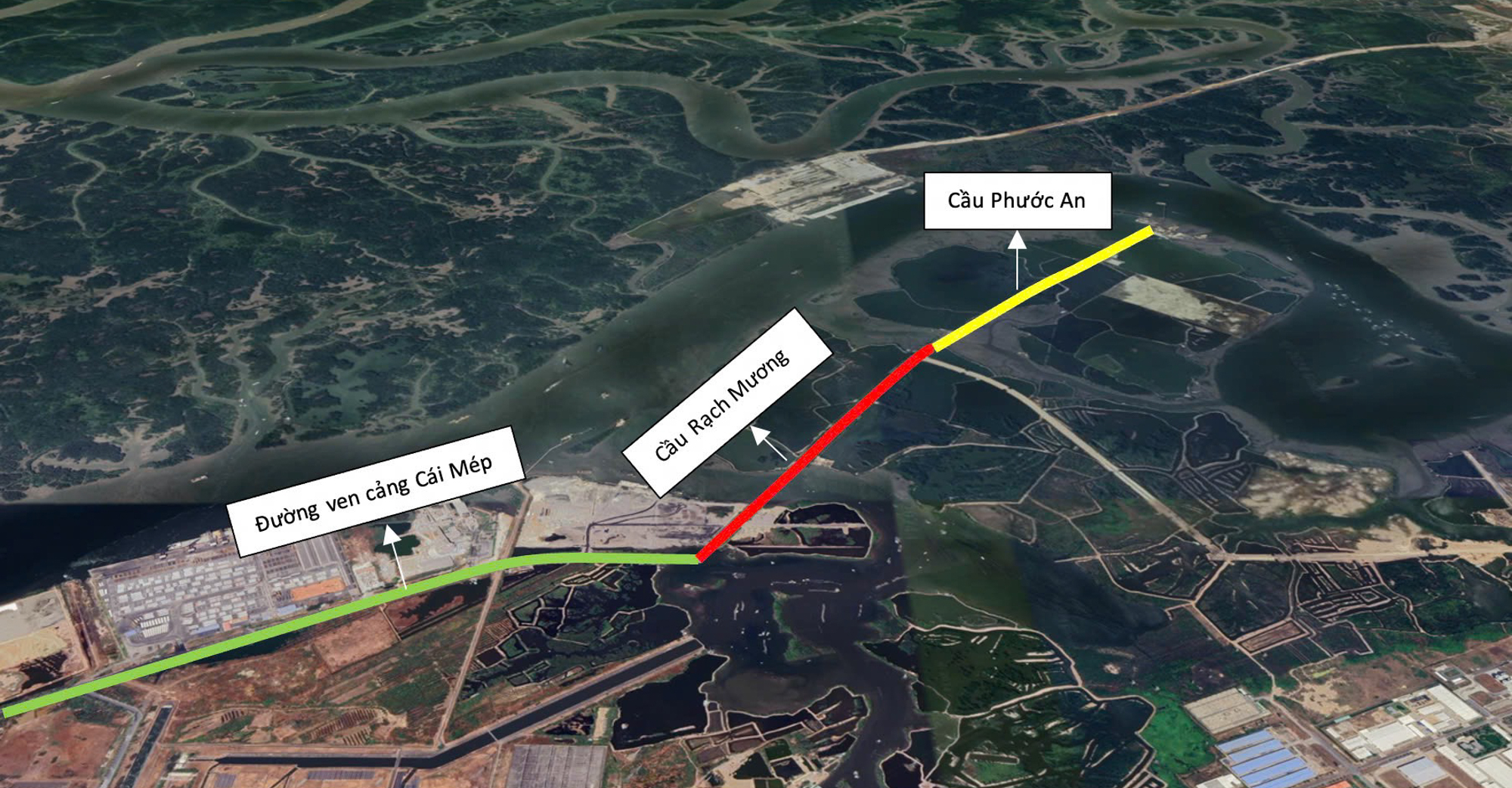
Beyond being a vital link shortening cargo transport routes between Ho Chi Minh City, Dong Nai, and the deep-water port cluster, the Phuoc An Bridge also enhances the appeal of major projects like Swanbay Dai Phuoc Island, Swan Park, and Eco Village Saigon River…
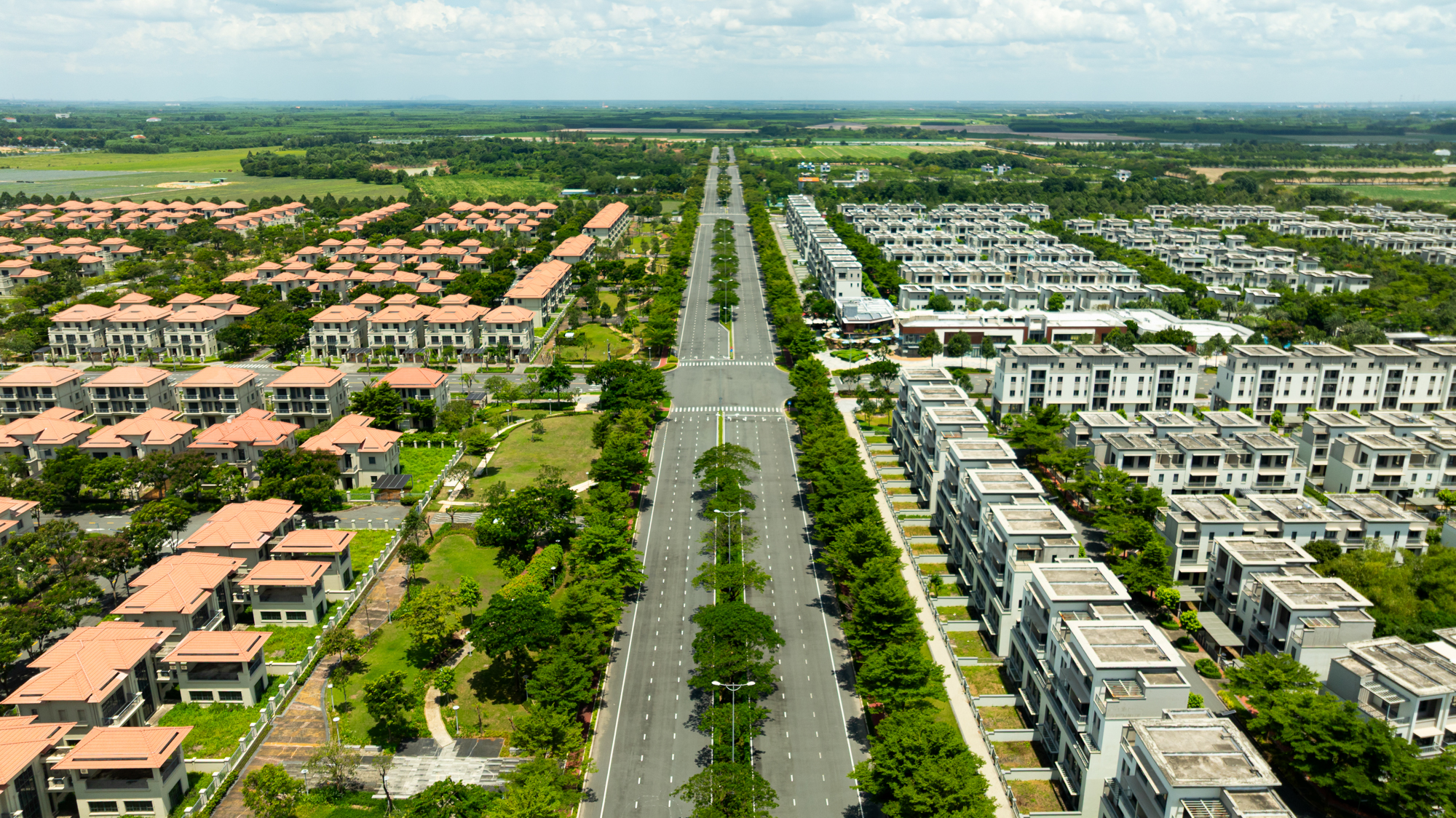
These projects already benefit from connectivity to Ho Chi Minh City via the Nhon Trach Bridge and Ring Road 3. With the Phuoc An Bridge, they gain further advantage by connecting to the former Vung Tau area. Local real estate agents report a 10–15% increase in land and townhouse prices near industrial zones in Q3/2025, particularly along Road 319 and the Phuoc An Bridge approach.
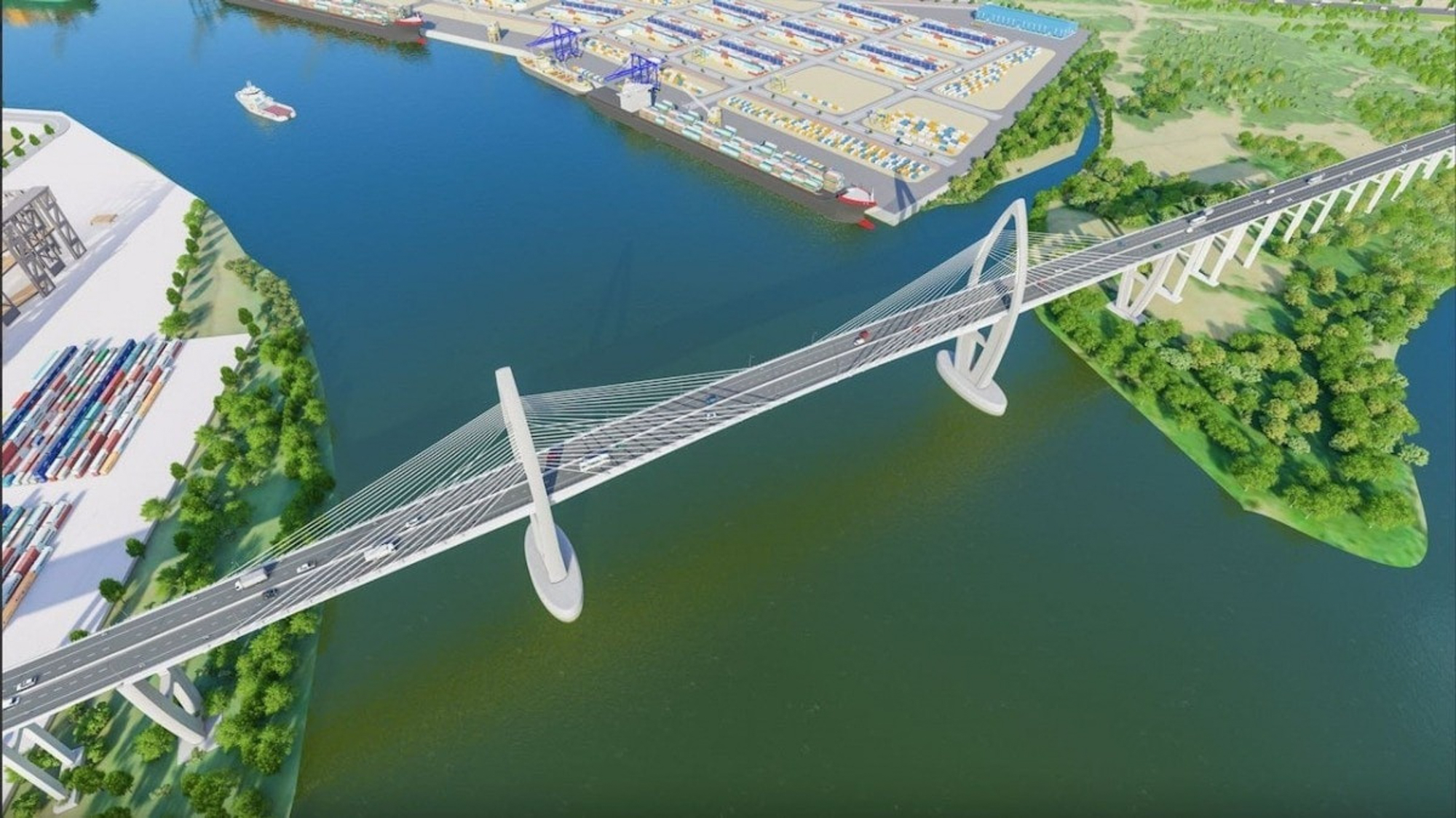
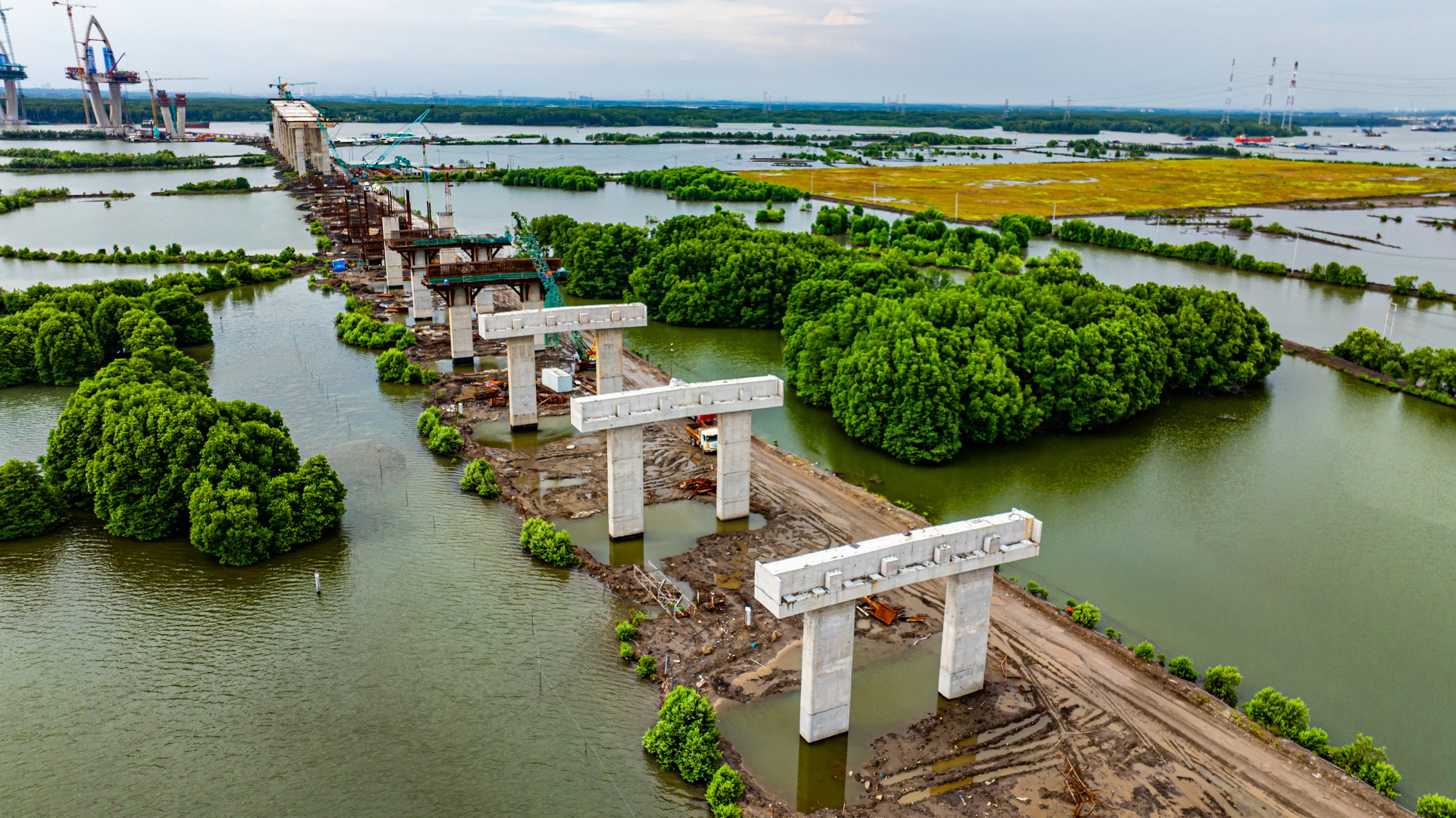
The project, with a total investment of nearly VND 5 trillion, is scheduled for completion in 5 years (2023–2027). The bridge spans approximately 4.3 km, including a 3.5 km bridge section and an 800 m approach road. It features a hybrid girder-cable design. The main span measures 250 m, half the length of the Can Tho Bridge’s main span.
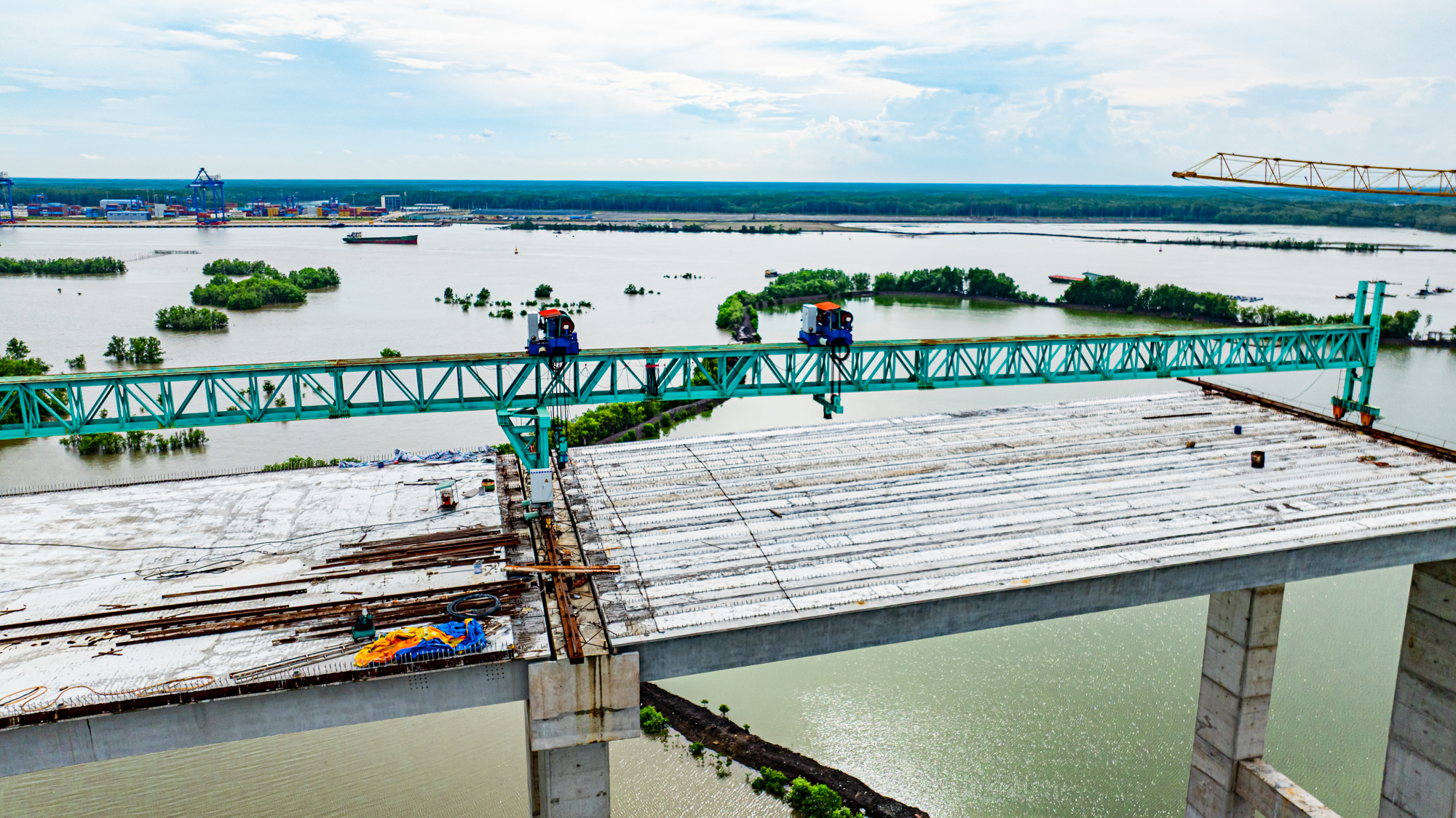
The main bridge is 27 m wide, accommodating 4 motor vehicle lanes and 2 lanes for non-motorized vehicles. It is designed to urban road standards with a speed limit of 70 km/h. The bridge piers are constructed with reinforced concrete to withstand salty conditions for 100 years, preventing corrosion of internal steel structures.
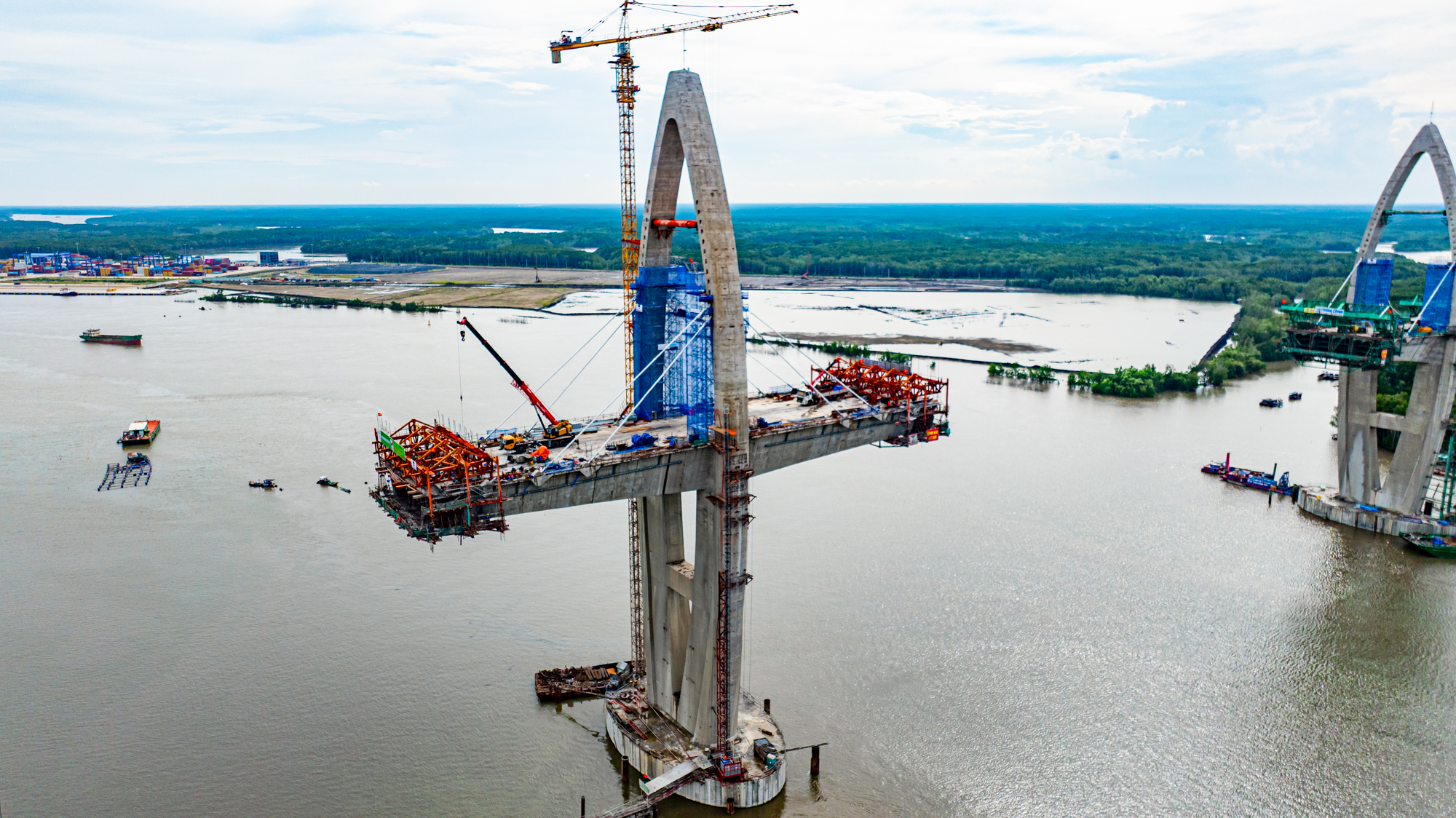
The bridge has a clearance of 55 m, equivalent to a 20-story building, allowing ships with a capacity of 30,000 tons to pass beneath. Such vessels, over 180 m long, are comparable to large container ships accessing deep-water ports, highlighting the project’s high technical requirements.
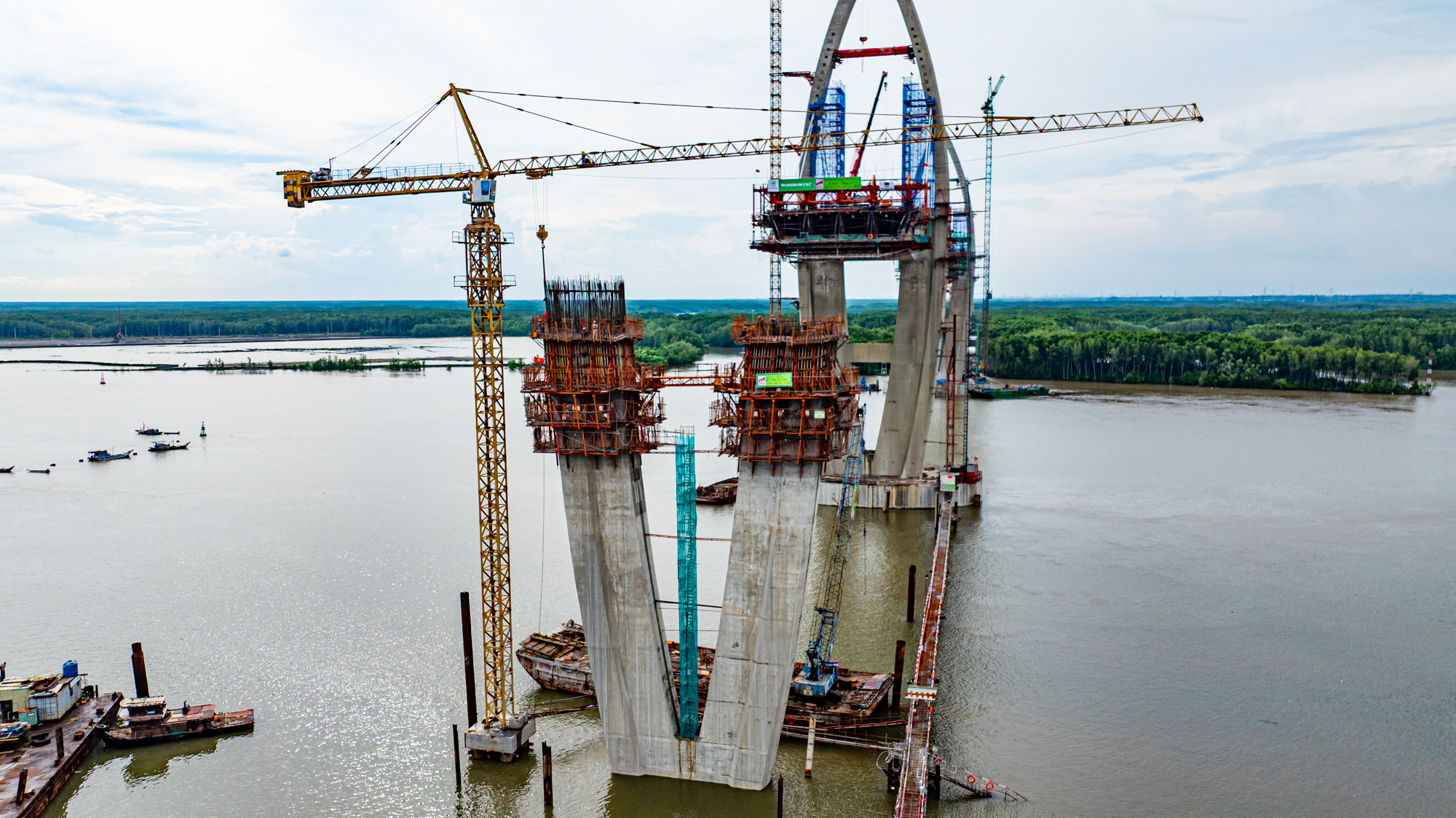
The main pier of the Phuoc An Bridge is under construction in the middle of the Thi Vai River, featuring an Extradosed box girder structure—an advanced technology enhancing load-bearing capacity and durability compared to traditional concrete bridges.
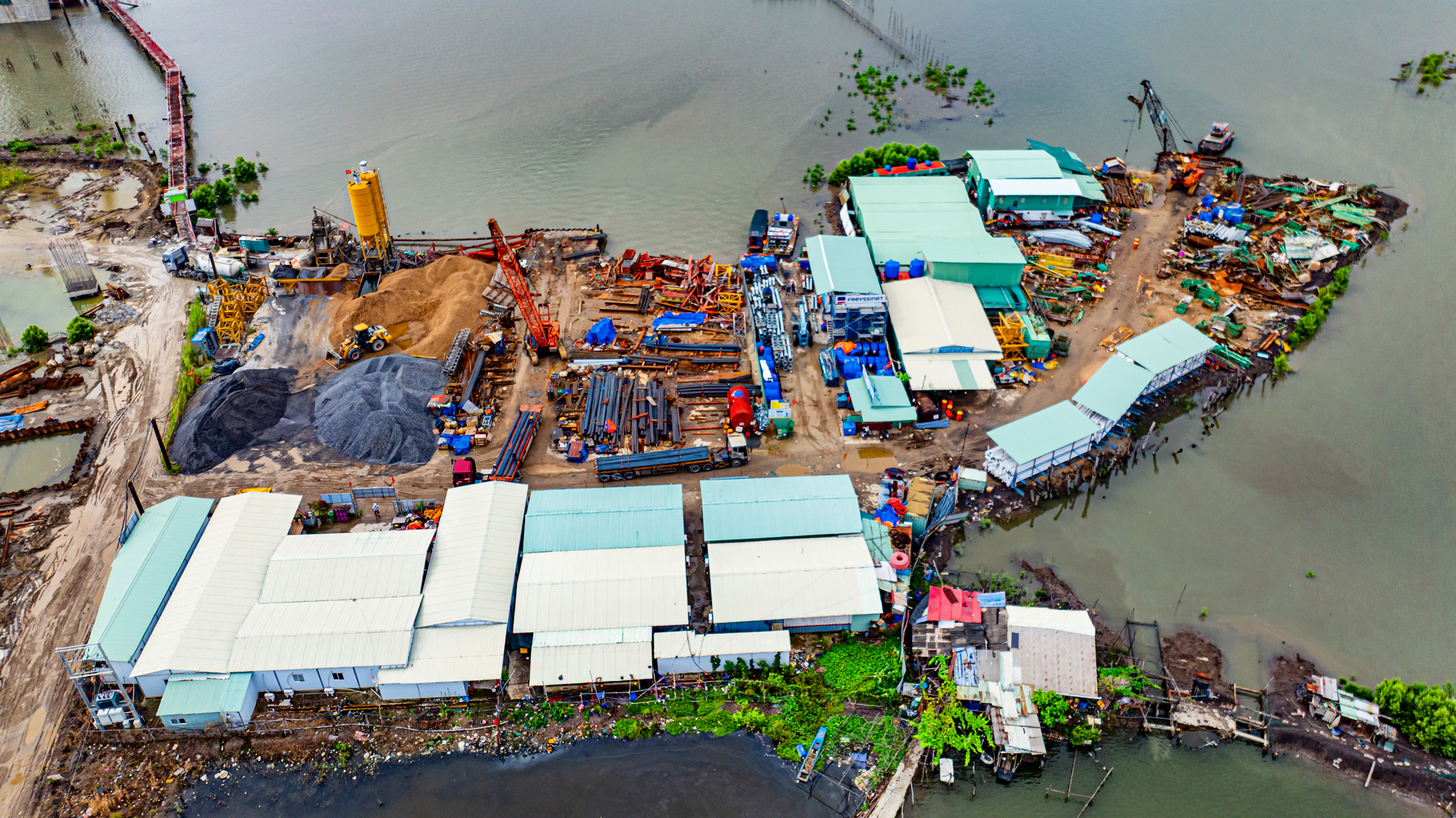
The management area and workers’ camp are located at the foot of the Phuoc An Bridge, where dozens of engineers and workers labor day and night to meet the closure deadline next year. Materials, steel, and aggregates are stockpiled along the Thi Vai River, reflecting the urgency of this nearly VND 5 trillion infrastructure project.
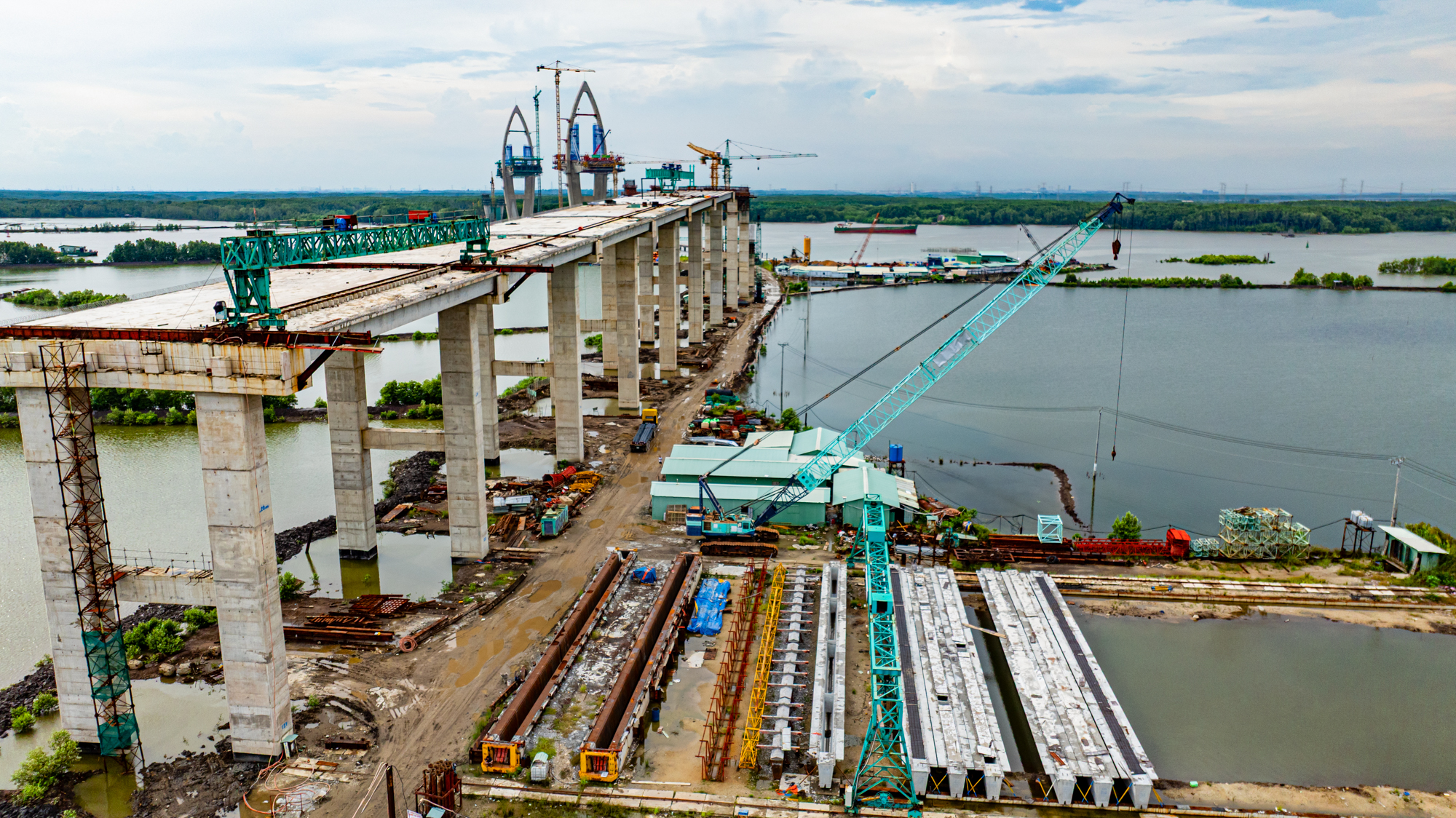
Land clearance on the Ho Chi Minh City side is nearly complete. Embankment and ground leveling are accelerating, with road foundation expected to finish in Q4/2025, facilitating closure with the main bridge section.
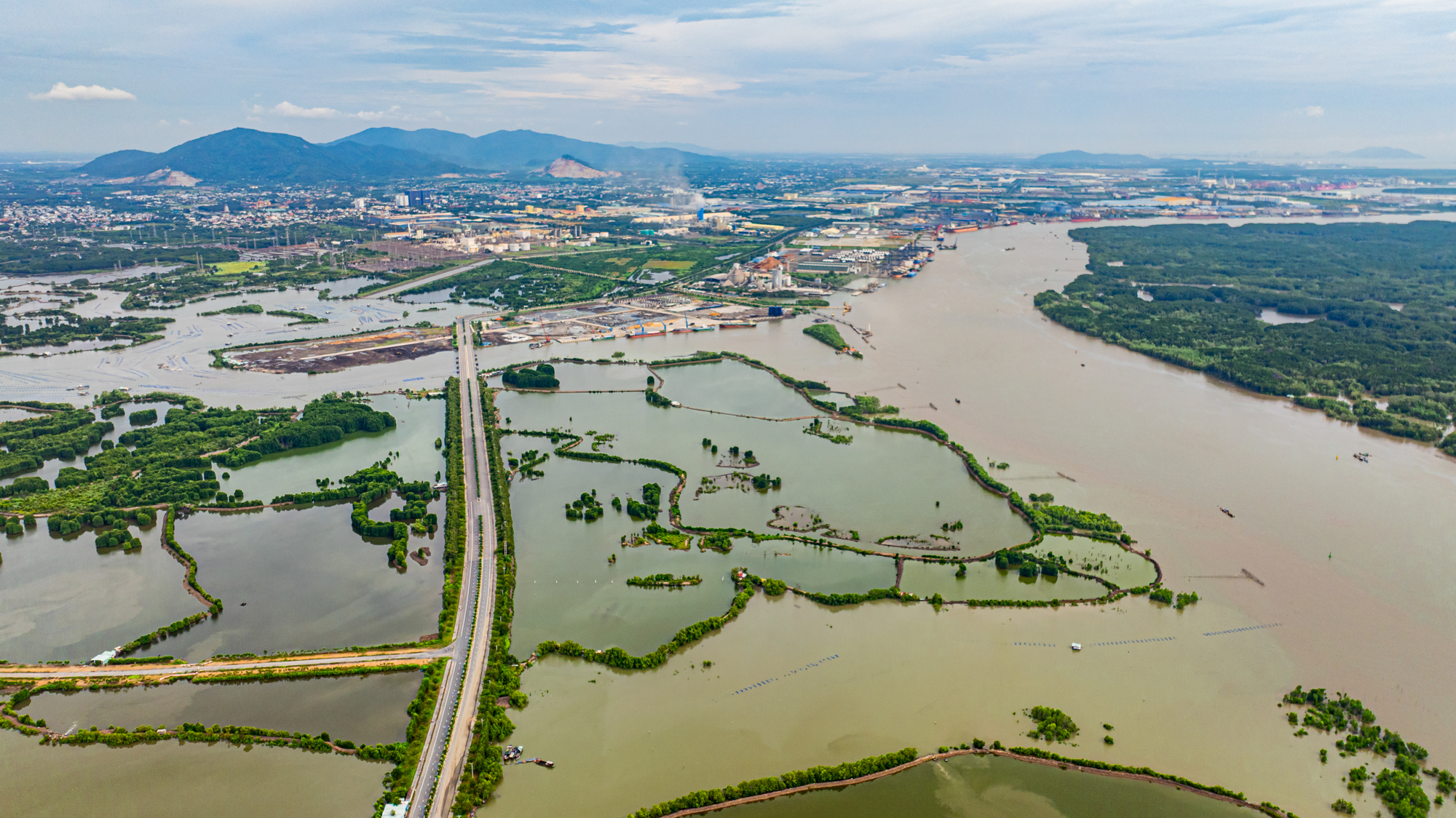
The bridgehead area on the Ho Chi Minh City side is a major logistics hub in Southeast Vietnam. Following consolidation, the area is being expanded with additional warehouses, dry ports, and coastal roads—laying the groundwork for a cargo transport network to the Cai Mep – Thi Vai port cluster.
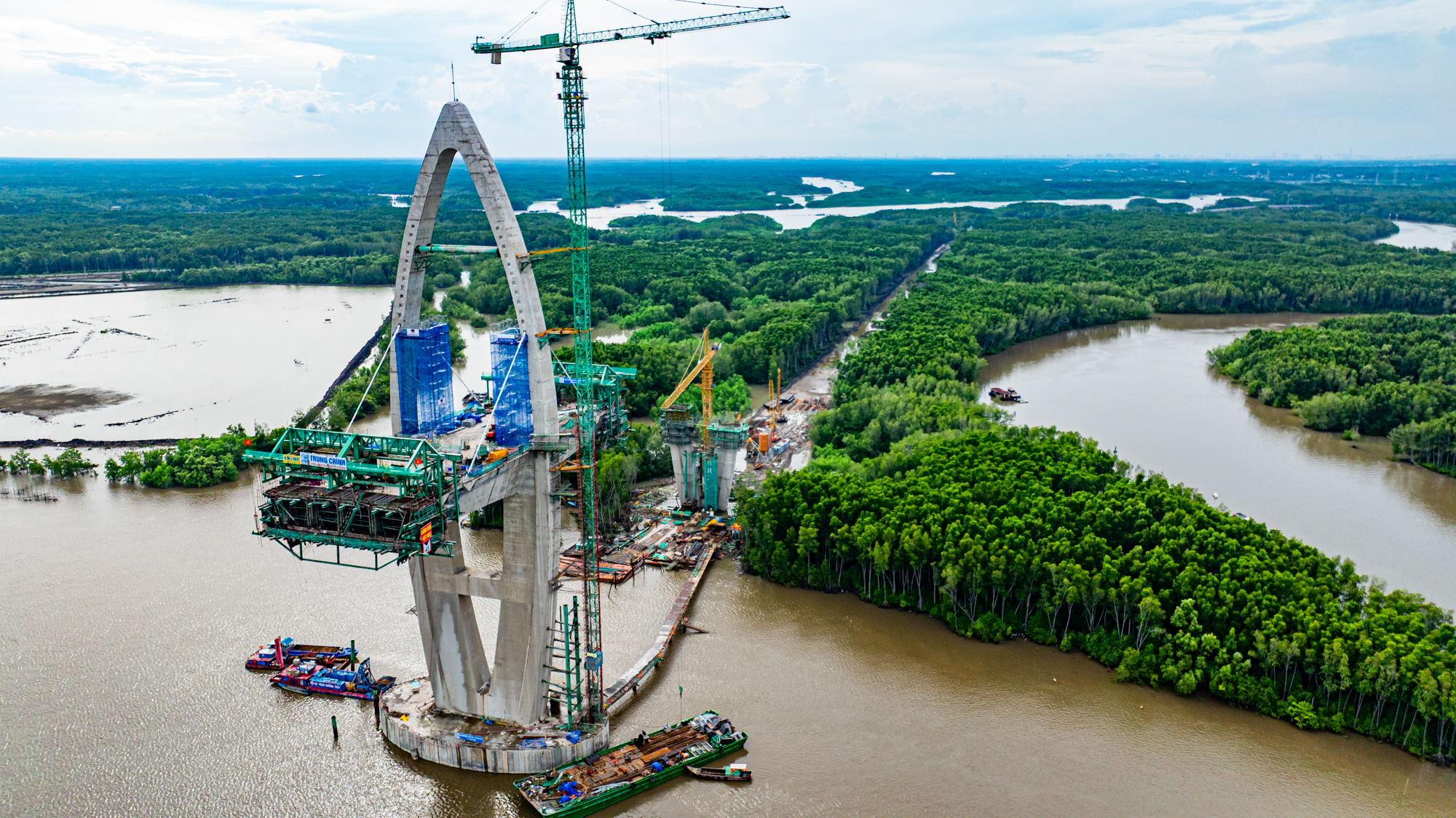
On the Nhon Trach (Dong Nai) side, the site remains cluttered with unfilled earth and mud. Some pile foundations are under construction, indicating significant work remains before the two main bridge spans are joined.
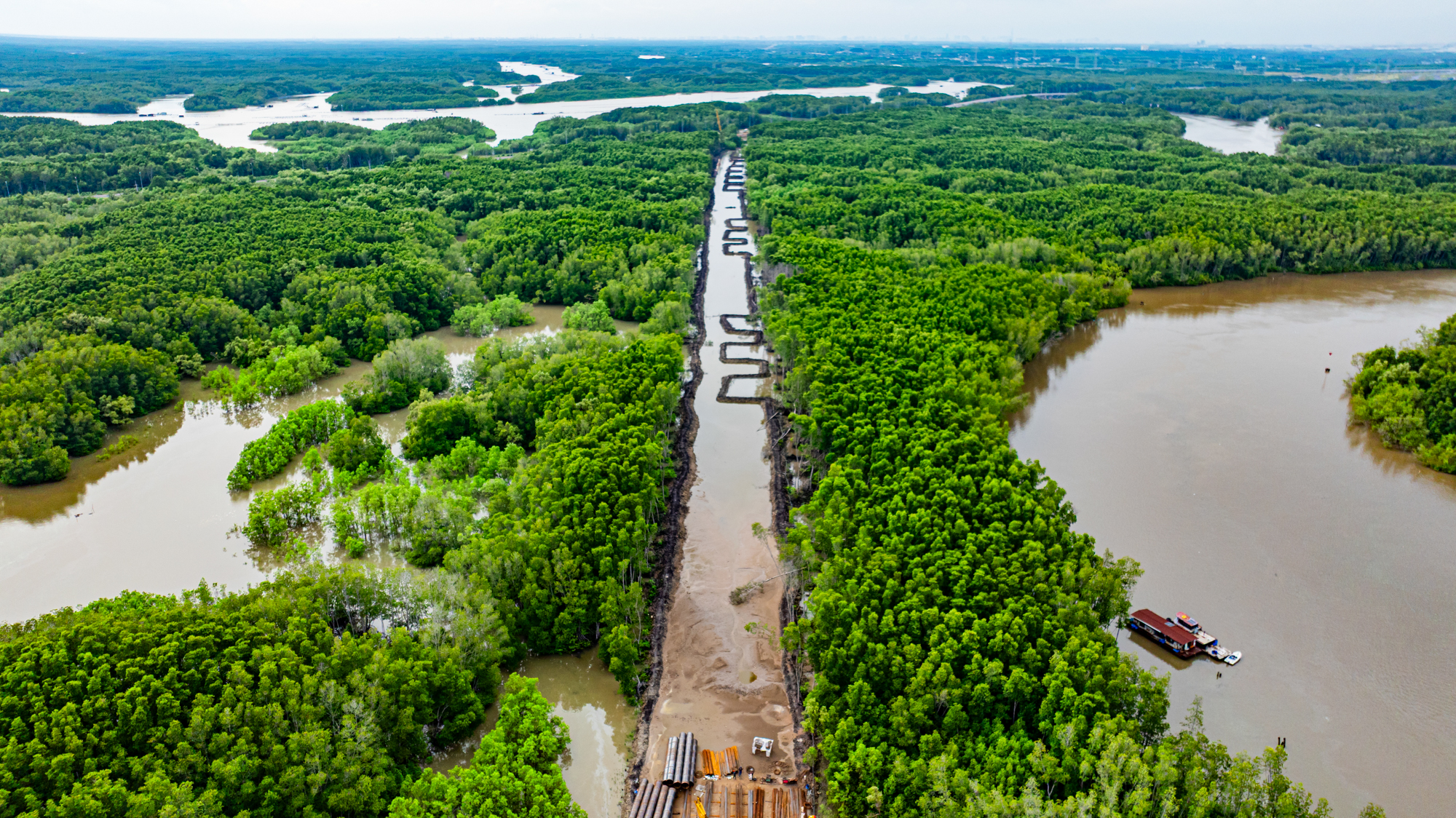
Here, the Phuoc An Bridge approach road directly connects to Nhon Trach Industrial Zone 5 and the expanded Road 319, forming a new central traffic axis. Once operational, container trucks from industrial zones will reach the Cai Mep – Thi Vai port cluster in just 15 minutes, avoiding the 20 km detour via National Highway 51.
Transforming Ho Chi Minh City’s Green Lung: A $3 Billion Interchange Project Breaks Ferry Dependency
Experience the groundbreaking first interchange in Vietnam, designed to international standards akin to Singapore, strategically located in Cần Giờ. This transformative project eliminates the ferry dependency at Bình Khánh, seamlessly connecting Southern Ho Chi Minh City to the national highway network.
Latest Directive from Ho Chi Minh City on Relocating Residences Above and Along Canals and Waterways
In light of the delayed progress in implementing certain components of the urban renewal project for residential areas along canals and creeks in Wards 3, 4, and 5 (Chánh Hưng, Bình Đông, Phú Định), the Ho Chi Minh City People’s Committee has directed relevant departments, agencies, and the Ward Secretaries and Chairpersons to intensify their leadership and guidance. They are to ensure rigorous, effective, and timely execution of the project, adhering strictly to the established deadlines.
Sơn Kim Land Acquires Prime 10-Hectare Project in Ho Chi Minh City, Previously Held by Novaland
Saigon Broadway, a meticulously planned development, spans over 96,000 square meters and features 12 blocks of residential and office spaces, ranging from 25 to 35 stories in height. This ambitious project offers a total of approximately 3,200 units, designed to meet the diverse needs of modern living and working environments.
High-Speed Rail Link: Ho Chi Minh City Proposes Fastest Route Connecting Long Thanh to Tan Son Nhat
The Ho Chi Minh City People’s Committee has submitted a detailed proposal to Prime Minister Pham Minh Chinh and Deputy Prime Minister Tran Hong Ha regarding the development of a rail link connecting Tan Son Nhat and Long Thanh airports. This initiative aims to enhance transportation efficiency and reduce travel time between the two major aviation hubs in the region.
Over 2,500 Attendees Flock to A&T Saigon Riverside’s Grand Architectural Launch Event
Over 2,500 attendees gathered for the grand unveiling of the A&T Saigon Riverside architectural masterpiece on the morning of October 19, 2025. The event’s fervor wasn’t solely fueled by its scale but by the profound impact of a riverside marvel—a beacon of unparalleled investment potential in Ho Chi Minh City’s Northeast region.








